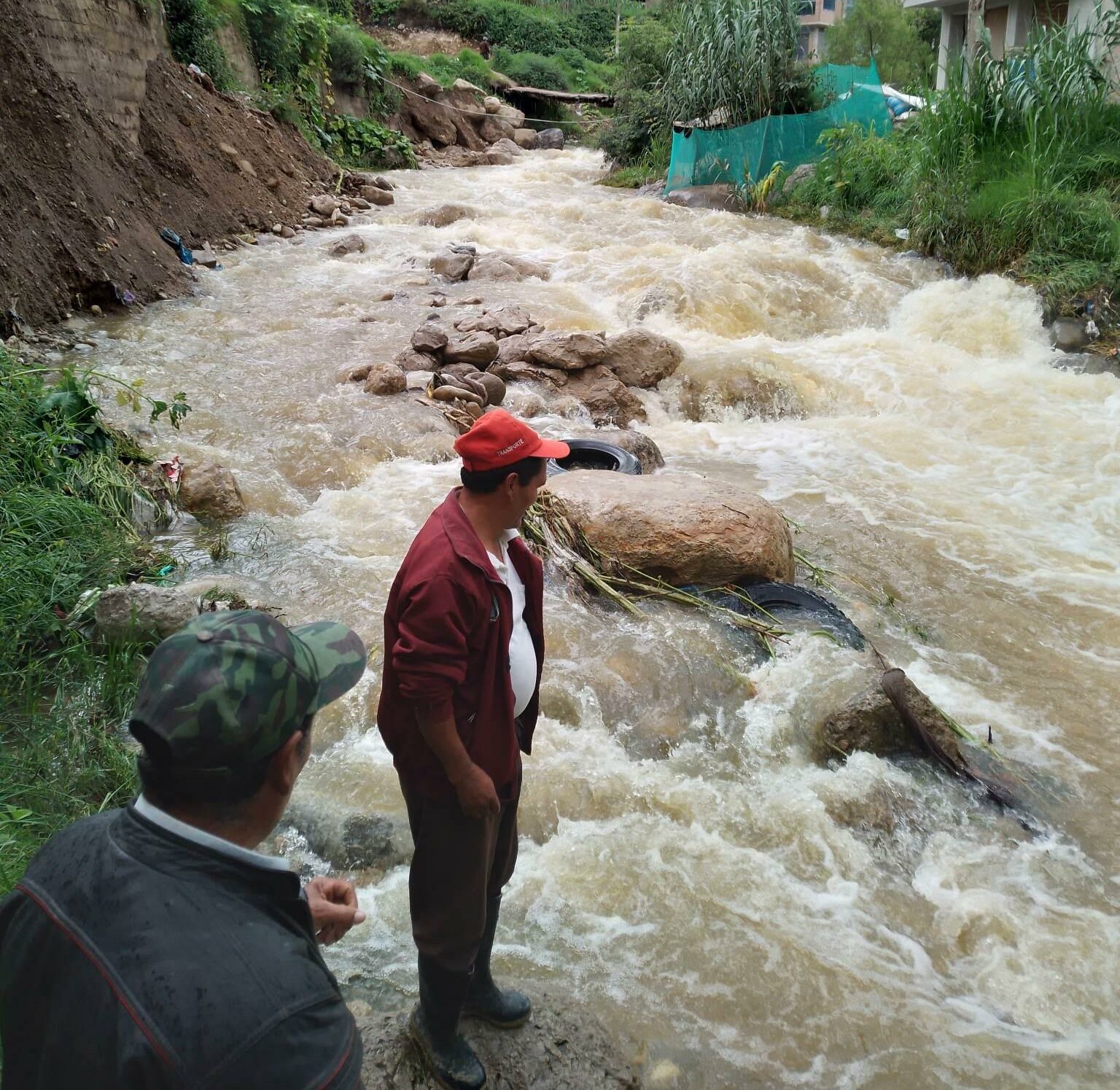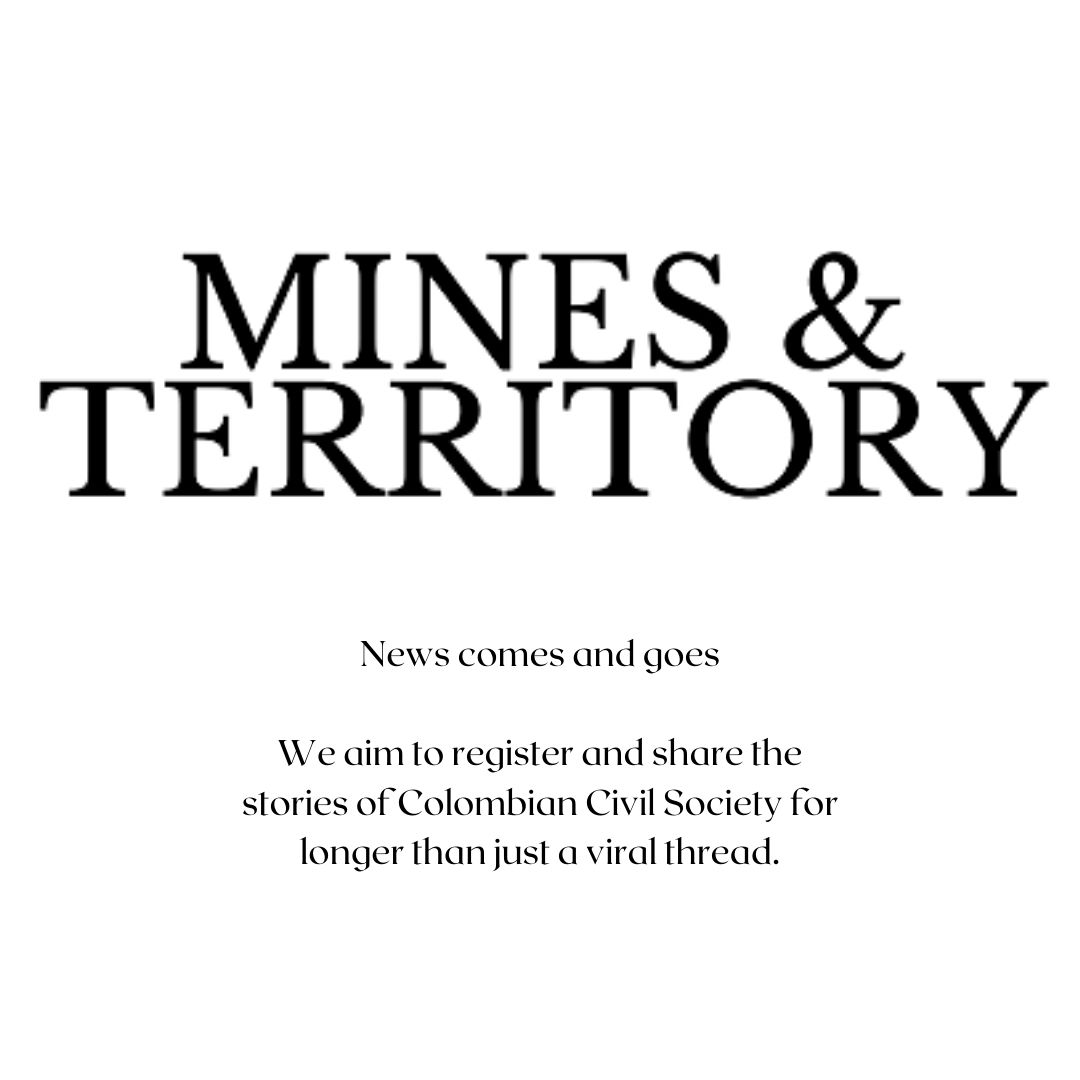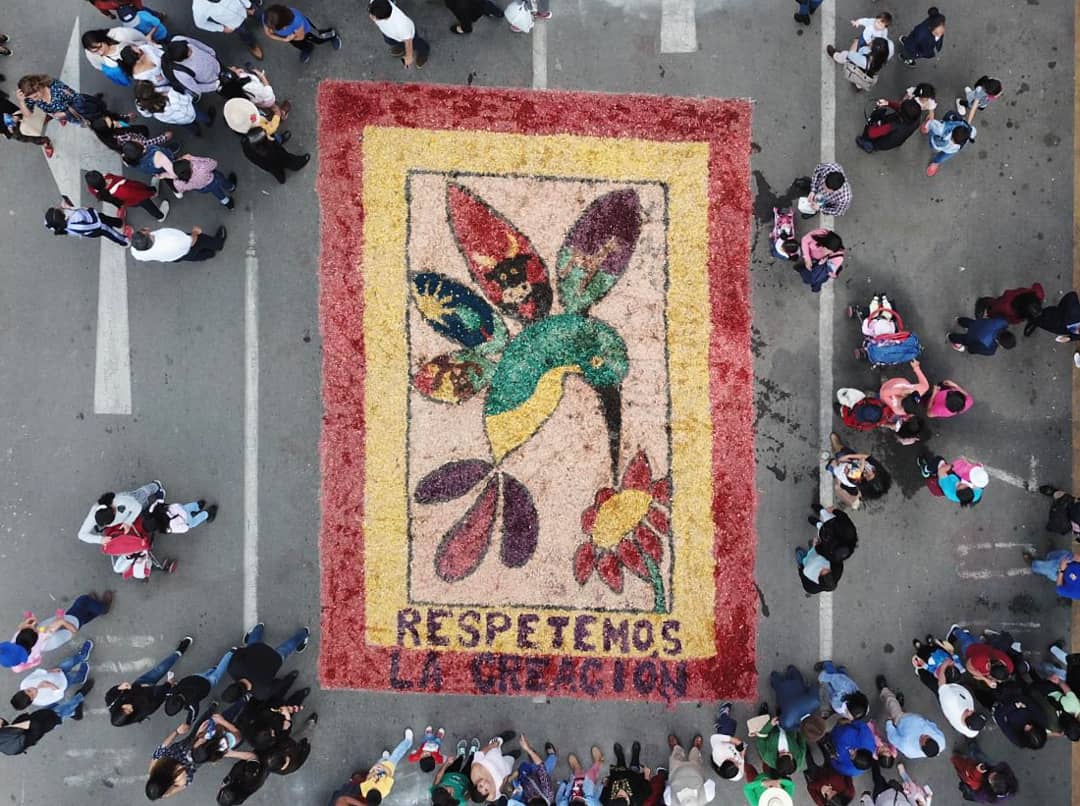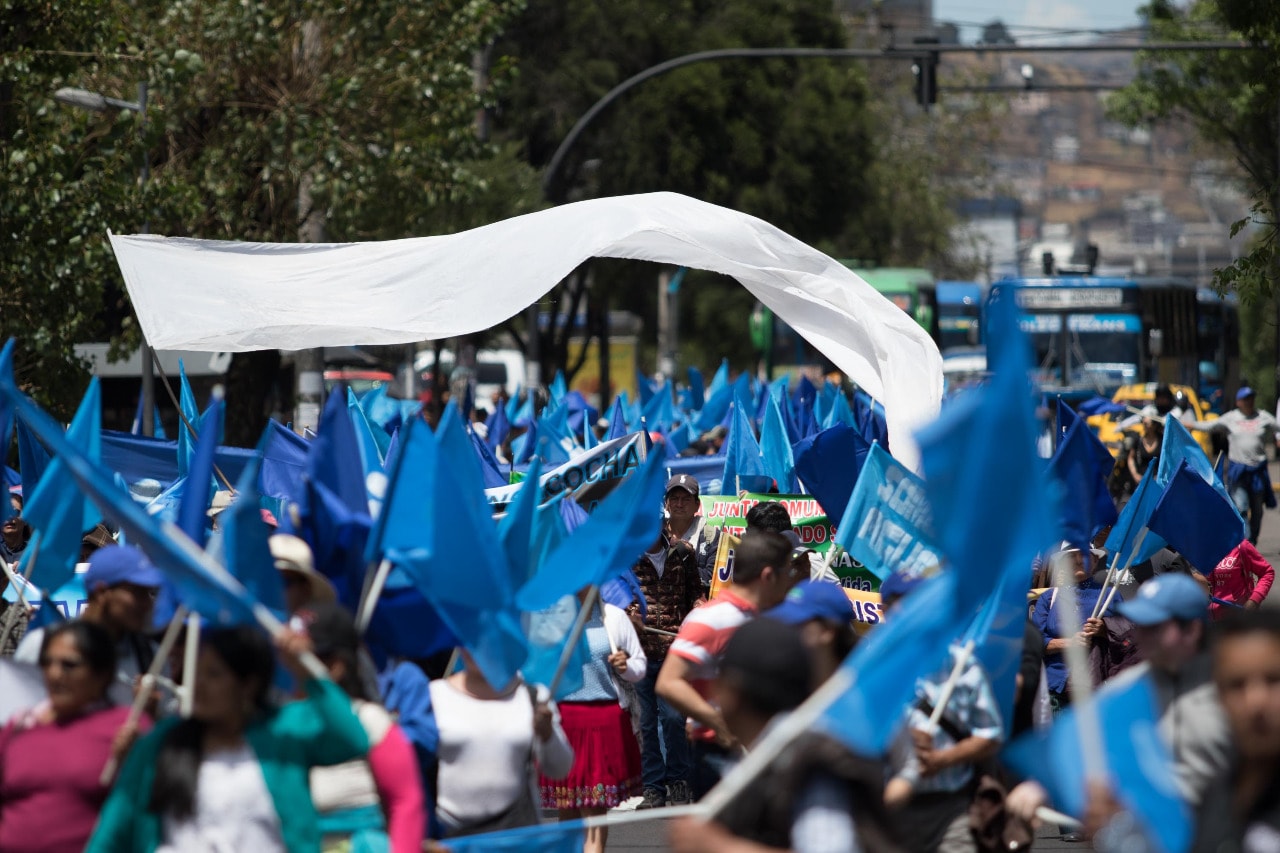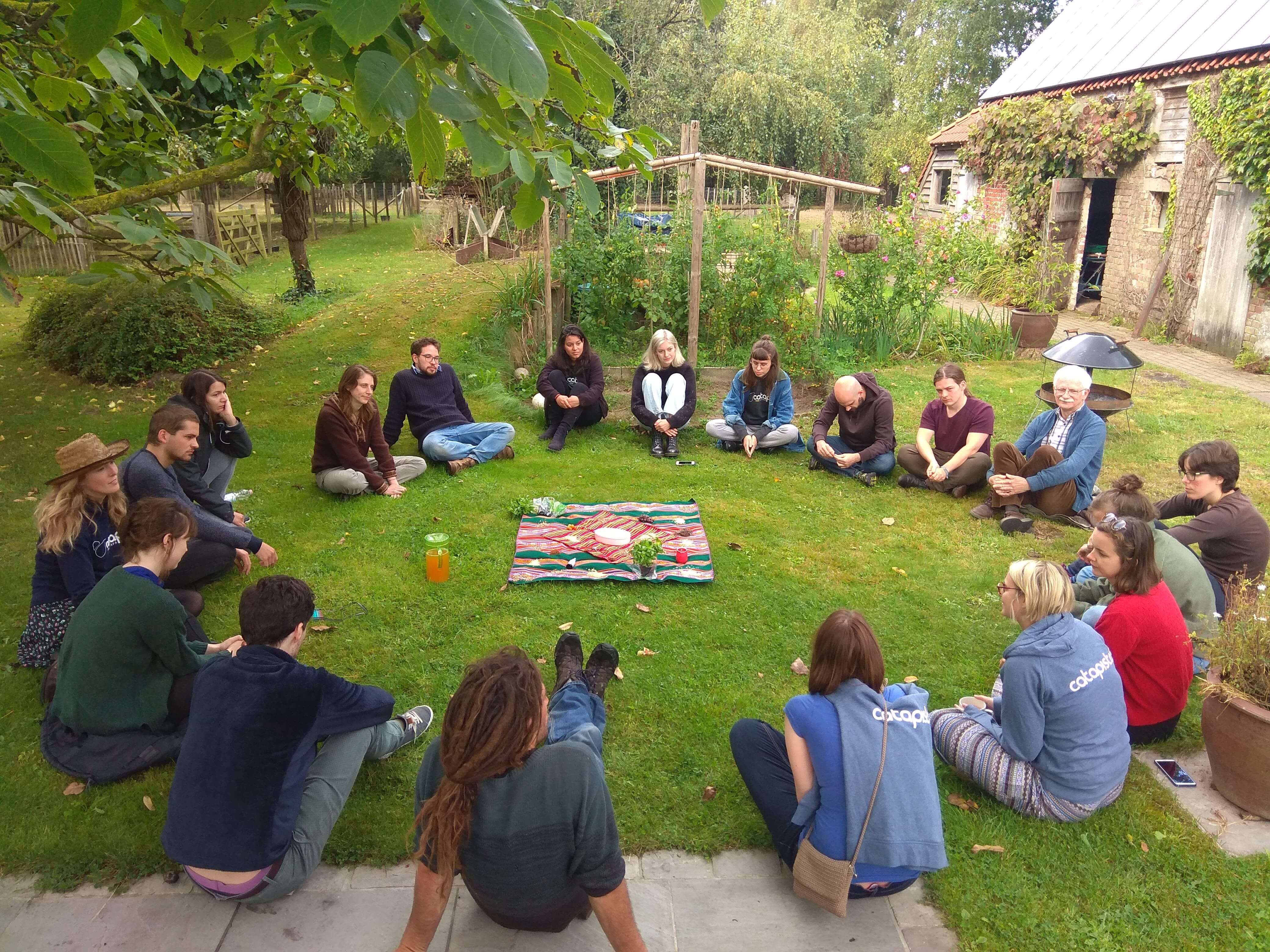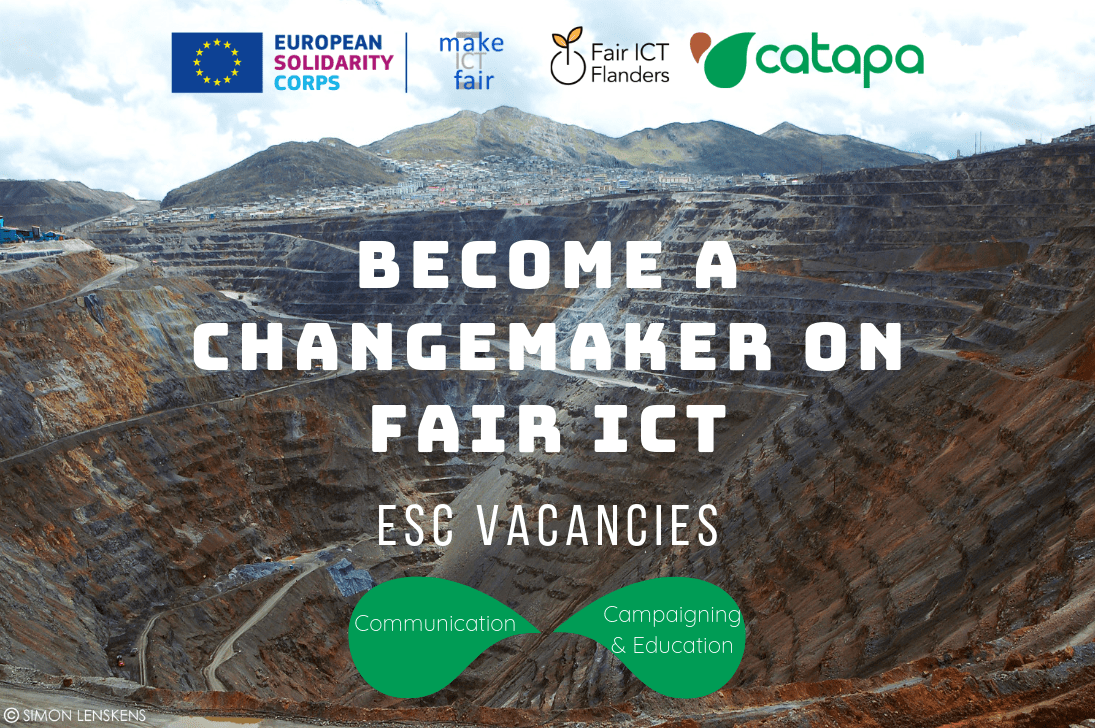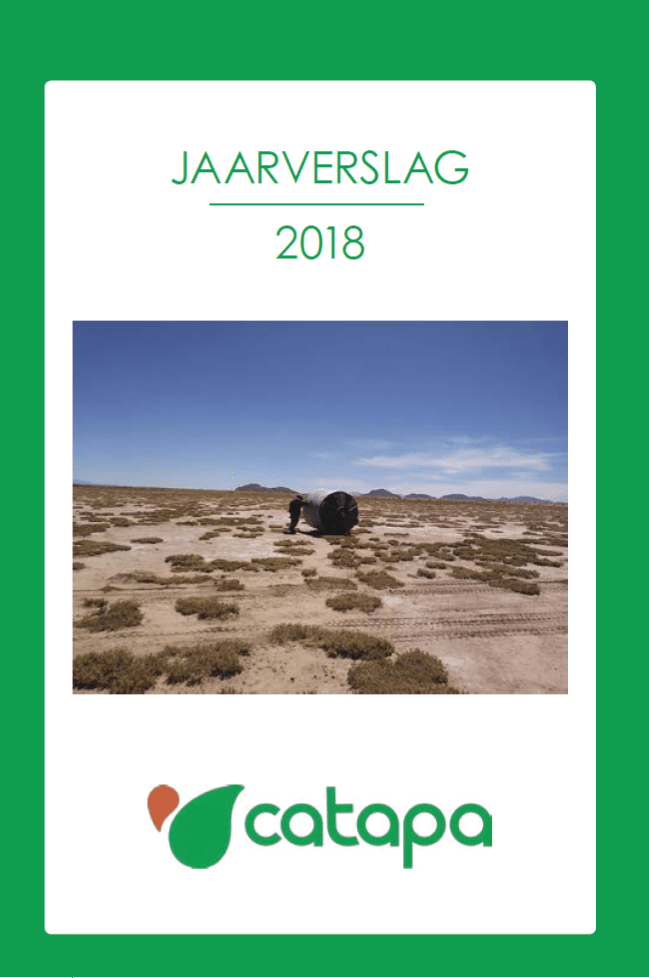IV Nationale Bijeenkomst van Communautaire Milieuwaarnemers in Peru
Vorige week, 22-24 maart, hebben verschillende milieubewakingscomités van GRUFIDES deelgenomen aan “El IV Encuentro Nacional de Vigilantes y Monitores Ambientales Comunitarios” in Ayacucho, samen met comités uit de regio’s La Libertad, Pasco, Junín, Ayacucho, Chosica-Lima, Apurímac, Cusco, Moquegua en Puno.
Het doel was onze capaciteiten te versterken en ervaringen uit te wisselen over watercontrole in door mijnbouwprojecten getroffen gebieden. De delegatie van Cajamarca was verreweg de grootste aanwezige op de bijeenkomst.
Op Wereldwaterdag bezochten we de gemeenschap van Santa Fe in de provincie Cangallo in de bergen van Ayacucho, op ongeveer 4.500 m hoogte. In een krachtig vertoon van hoop en verzet tegen de vernietigende gevolgen van grootschalige mijnbouw voor onze gemeenschappen, brachten regio’s uit heel Peru een offer aan het meer en zongen zij protestliederen.

Rivier die langs de gemeenschap van Sante Fe stroomt, waarbij de comités uit verschillende regio’s verschillende tests uitvoerden om de kwaliteit van het water te controleren. Foto Copyright: CATAPA
Daarna oefenden we verschillende methoden van watercontrole langs een stuk van de rivier die langs de gemeenschap van Santa Fe stroomt.
Hoewel uit de resultaten bleek dat de rivier schoon is en geschikt voor consumptie, bleek tijdens de bijeenkomst dat het hele gebied Sante Fe in concessie is gegeven aan het mijnbouwbedrijf BHP, zonder medeweten van de lokale gemeenschap. Volgens CooperAction is 27,8% van de hele regio Ayacucho in concessie gegeven aan mijnbouwbedrijven, waaronder minstens 16% van de provincie Cangallo, waar Santa Fe ligt.

Kaart van mijnbouwconcessies, regio Ayacucho, 2022. Foto Copyright: CooperAction, 2022.
Tijdens de volgende dagen planden we acties voor het komende jaar en bespraken we maatregelen om onze beweging op nationaal en regionaal niveau van Cajamarca te escaleren en te versterken om “Ja tegen Water” en “Nee tegen Mijnbouw” te zeggen.
Ook de huidige politieke crisis werd besproken, met name in verband met de mijnbouw. Volgens Jaime Borda van Red Muqui hebben de eerste 100 dagen van Dina Boluarte een reactivering van de mijnbouwindustrie te zien gegeven, met de dreiging dat verlaten mijnbouwprojecten zoals Conga gereactiveerd zouden kunnen worden.
In het licht hiervan hebben de aanwezige vertegenwoordigers een gezamenlijke verklaring afgelegd met verschillende eisen, waaronder een veroordeling van de moord op 49 demonstranten door de politie en het leger, de wettelijke erkenning van het werk van de watercontrolecomités, het aftreden van Dina Boluarte, het uitschrijven van nieuwe verkiezingen en het opstarten van het proces voor een nieuwe grondwet met de actieve deelname van inheemse volkeren en sociale organisaties. De volledige verklaring kunt u hier lezen.
Stap voor stap, via initiatieven zoals de comités voor toezicht op het water, leren wij als gemeenschappen die te maken hebben met mijnbouw meer over onze rivieren, en hoe we ze kunnen verzorgen en beschermen.
Wij zijn waterverdedigers, hoeders van het geschenk dat ons leven geeft. Staatsinstellingen moeten dit respecteren en erkennen, en met ons samenwerken om onze watervoorraden te beschermen voor de komende generaties.
Geschreven door Connor Cashell, CATAPA Global Engagement Officer Peru en vrijwilliger voor GRUFIDES.
Bibliografie:
- CooperAcción (2022) Ayacucho – Mayo 2022. Beschikbaar op: https://cooperaccion.org.pe/mapas/ayacucho-mayo-2022/ [Accessed 28 March 2023]
- CooperAcción (2016) Cangallo – Noviembre 2016. Beschikbaar op: https://cooperaccion.org.pe/mapas/cangallo-noviembre-2016/ [Accessed 28 March 2023]
- El Peruano (2023) ‘SECTOR ENERGÍA Y MINAS INSTITUTO GEOLÓGICO MINERO Y METALÚRGICO: PETITORIO DE CONCESIÓN MINERA’, El Peruano, 30 January. Beschikbaar op: https://elperuano.pe/GespoBoletinFiles/2023/01/30/2146648_1.pdf [Accessed: 28 March 2023]
- Jasmine, C. (2016) ‘Community opposition forces Newmont to abandon Conga project in Peru’,18th April, Minining.com. Beschikbaar op: https://www.mining.com/community-opposition-forces-newmont-abandon-conga-project-peru/ (Accessed: 28 March 2023).





